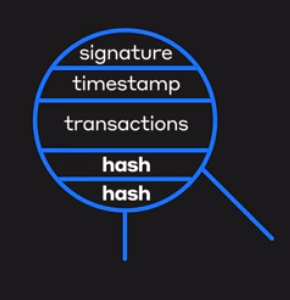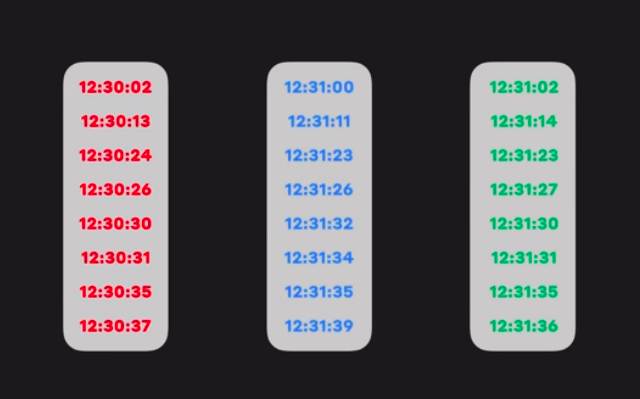The article guides you to Hashgraph, a patented Distributed Ledger Technology(DLT) in the form of a Directed Acyclic Graph(DAG) and its unique underlying consensus algorithm.
Why I am writing on it, and what brings me to know about Hashgraph?
While working on some project, I had been assigned a sub-task to plug in a consensus algorithm to ensure fair ordering of transactions during my intern. The use-case was critical and it was very important to ensure proper ordering of transactions.
You can find, many use-cases, where the fair ordering of transactions is a critical requirement. As an example, consider an online decentralized auction platform. Different users are bidding on something. Say one person bids on a certain value and hearing his value another person bids higher than his value. If the fair ordering of transaction is not ensured then the second person may win the auction, which should not happen.
Similarly, the project in which I was involved, dealt with a fair allocation of computing resources to the requestors along with good throughput and this indeed requires fair ordering of requests(transactions).
After a lot of literature survey and searching for some new ideas, I came across the Hedera Hashgraph project and it solved my problem.
Hashgraph ensures fair ordering of transactions.
Another characteristic or we can say feature because of which ‘Hashgraph’ is getting buzz is its high throughput of transactions and a very short delay in transaction’s confirmation.
Hashgraph ensures high thoughput of transactions.
The scalability problem is common in Blockchain Networks. The bitcoin’s theoretical transaction throughput is 27 transactions/sec. There are always some limitations in various already proposed consensus algorithms which limits the transaction throughput.
Check out this video by Dr Leemon Baird[founder of Hashgraph] explaining the drawbacks of Proof of Work:
Try to watch other videos of the playlist, it explains why different consensus algorithms involving leader election, voting etc can’t achieve a great performance.
So, he (Dr Leemon Baird) came with the idea of hashgraph, which solves much of the issues and ensure fair ordering with high throughput.

How Hashgraph achieves a better performance?
The reason for good performance the hashgraph, when compared to other DLTs, depends on these ‘Infinity Stones’:
- Hashgraph-a directed acyclic graph data structure that records who gossiped to whom, and in what order.
- Gossip about Gossip-the hashgraph is spread through the gossip protocol. The information being gossiped is the history of the gossip itself, so it is “gossip about gossip”. This uses very little bandwidth overhead beyond simply gossiping the transactions alone.
- Virtual Voting– every member has a copy of the hashgraph, so Alice can
calculate what vote Bob would have sent her if they had been running
a traditional Byzantine agreement protocol that involved sending votes.
So Bob doesn’t need to actually hear the vote.
Check out this video for more clarity on Virtual Voting-
Hashgraph Consensus
The idea to achieve consensus in the hashgraph consensus algorithm is based upon the ‘Gossip’ protocol, which isn’t a new thing. ‘Gossip’ protocols call other participants repeatedly and pass them all the events they don’t know about. The ‘gossip’ method is being used in many traditional message passing algorithms. So what makes ‘Hashgraph’ different? Let’s catch it up.

If one participant doesn’t know about some event, then some other node will gossip the missing information to him. All these events can be represented by a Directed Acyclic Graph(DAG).
If a new transaction is placed in the payload of an event, it will quickly spread to all members, until every member knows it. e.g. Alice will learn of the transaction. And she will know exactly when Bob learned of the transaction. And she will know exactly when Carol learned of the fact that Bob had learned of that transaction.
What’s inside the event?

Consider the case, Alice, Bob, Carol and Dave are members. Bob calls Dave. So Dave creates a new event to record this.

So the new event holds the Signature of Dave and the two hashes of the events prior to sync i.e self-parent(parent directly below) and other-parent(the event though which gossip is being done). Along with this event holds the list of transactions and timestamp which acts as a proof/vote of when did this event occur?
As the time pass, this event keeps passing along with the other events. So the whole network knows, when did this event occur and Dave created this.
It gives rise to an immutable, distributed data-structure which doesn’t contain linear blocks chained together for cryptographic immutability, instead, a directed acyclic graph(DAG).
The hashgraph at every node stores the entire history about ‘who gossip to whom and when’. So without the actual transfer of votes, the consensus algorithm moves toward the concept of virtual-voting for reaching consensus on the ordering of transactions.

The whole idea for fair-ordering revolves around the fact that each node knows all the event. So when a transaction is spread throughout the network, the hashgraph records the event containing the transaction. So, if we consider a transaction, it would have reached different nodes at different times. We can represent the consensus timestamp of this transaction with mean of all the event timestamps or the median of the event timestamp. Parallelly, if another transaction is spread, then the graph also holds the consensus timestamp of the other transaction indirectly. This consensus timestamp can be used to order the transaction.

Using these timestamps, the mean or median timestamp is obtained which represents the consensus timestamp and is used for fair ordering.

That’s all if you want to know more about visit hashgraph check out the references.
For more details and mathematical theorems behind the consensus, refer the original paper.
References:
- https://www.swirlds.com/downloads/SWIRLDS-TR-2016-01.pdf
- https://www.hedera.com/hh-whitepaper-v2.0-17Sep19.pdf
- Hashgraph Consensus Algorithm Explained | Dr Leemon Baird-https://www.youtube.com/watch?v=cje1vuVKhwY
- Swirds’ Leemon Baird Talks Hashgraph-https://www.youtube.com/watch?v=pOc23lJw7ls
- https://www.forbes.com/sites/forbesdigitalassets/2019/09/26/hedera-hashgraph-explored/#58cb3df27bd0
